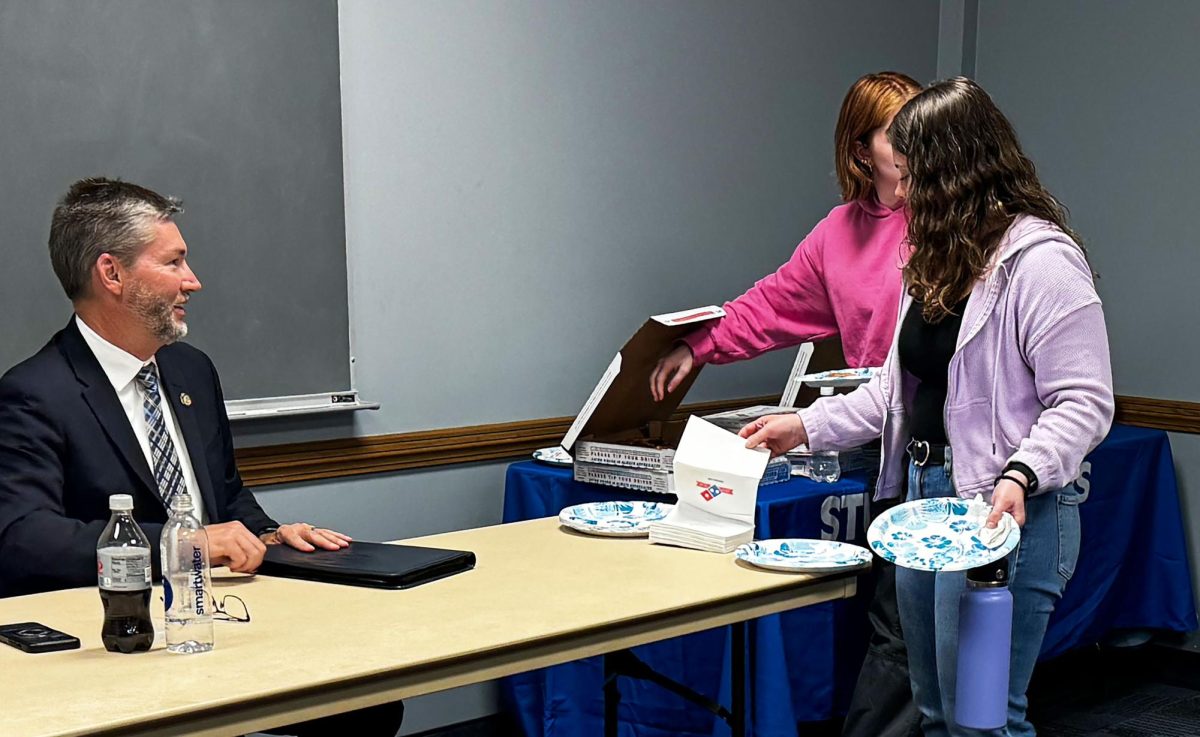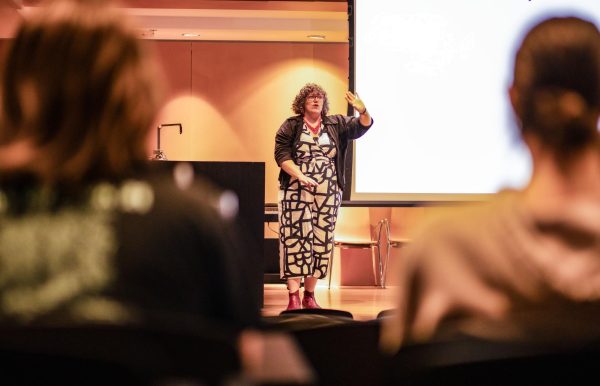Faculty senate passes CUPB resolution
January 20, 2016
The Faculty Senate passed a resolution to review the structure and strengthen the role of the Council on University Planning and Budget at its meeting Tuesday.
Senators Teshome Abebe and Grant Sterling submitted the resolution, which calls on President David Glassman to revise the structure of the CUPB by significantly reducing the number of members.
Sterling said a committee with more than 20 people cannot function.
“If the committee is only going to be a place where the president and vice presidents can pass out information, then the amount of people doesn’t matter,” Sterling said. “But if they have a role in planning and budgeting, then they have to reduce the size.”
The resolution calls for an increase in the proportion of members representing academic affairs, particularly faculty, and the preservation of representation for all four academic colleges, the library and the student body
It also calls for exploring ways to engage the council as a more central advisory body of the planning and budgeting process of the university.
“The essence of the resolution is not to reformulate CUPB in a way that (Faculty Senate) wishes to do it, it is to give flexibility to the president if he needed it, to the institution and to all of us so that the committee can be much more effective than what we perceive it has been,” Abebe said.
Senator Jason Waller asked how the resolution would be implemented.
“Do we send passes to the president and wait six months then ask him in six months what happened?” Waller said.
Abebe said the president can have the option of not changing anything in CUPB and that he is satisfied with the way CUPB is operating.
“Our role is as an advisory (committee), and this is really an advisory role as far as the president is concerned, and that’s how it should be looked at,” Abebe said.
Senator Amy Rosenstein called for a revision to section B of the resolution to include not just an increase in the proportion of faculty representation, but student representation as well.
“I think we still need to hold on to the students,” Rosenstein said. “I do think it is valid that we have a number of different student representatives.”
Rosenstein said the large number of members on the CUPB is because the amount of populations they represent across campus.
She said changing the proportion of members in CUPB would result in the loss of representation.
“I would hate to see that happen,” Rosenstein said.
Rosenstein said adding students and faculty shows a sense of unity and direction toward their mission, which is about the students.
Sterling said he agrees they are all about students, but he said he does not want to increase the proportion of members that represent students.
Sterling said during his time on the CUPB it was difficult to find students who were willing to attend all the meetings and do the work of learning about the budgetary background.
“In almost all cases in the end of one year you lost them,” Sterling said. “At least the faculty and staff members serve longer.”
Sterling said making decisions on what is best for the students is critical, but it does not necessarily mean an increase in the percentage of student representatives.
The amendment for section B was not passed; however, the original resolution was passed unanimously.
Analicia Haynes can be reached at 581-2812 or [email protected].
















































